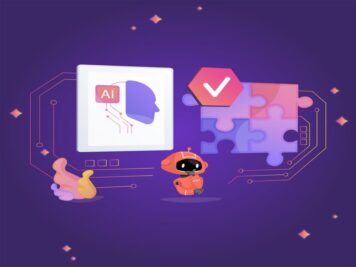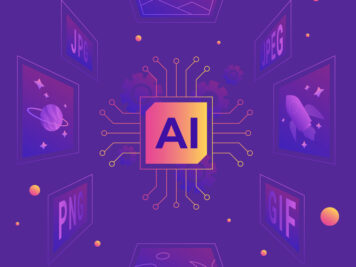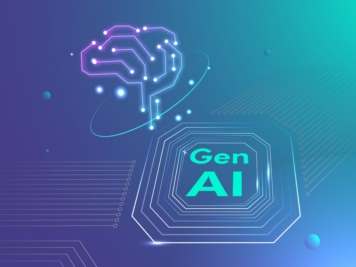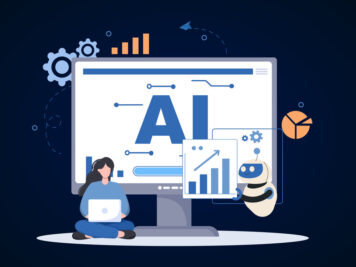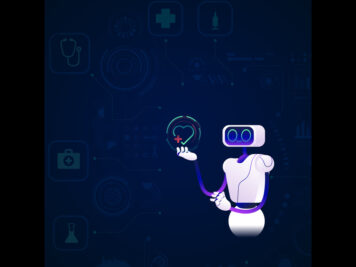Time-to-market is extremely crucial for startups, and it forces them to innovate faster and smarter. Artificial intelligence and machine learning have emerged as their game-changers. These technologies not only help startups disrupt industries but also accelerate timelines for big tech. The impact of AI in product development has skyrocketed as more and more tools have started accelerating steps like design, test, and iteration. McKinsey’s 2025 survey reveals a growing reliance on AI. Over 78% respondents reported using AI in at least one business function, up from 72% in early 2024 and 55% a year earlier.
Generative AI has heightened global interest in AI by bringing a broader range of capabilities into focus. But AI in product development requires precision, skill, and a deep understanding of the technology’s capabilities and limitations.
Over the last 21 years, we have built 200+ products, leveraging predictive analytics for wireless networks, real estate, adtech, and martech. GenAI helped explore corner cases in retail, logistics, and video messaging. We have also applied chatbots, reinforcement learning, image processing, and NLP across channel marketing, recruitment, media, and biotech- accelerating product development and ensuring sustainable outcomes.
Insights gleaned from these experiences include a proper understanding of how to integrate AI into your product development process, required tools and skills, and how to build an AI-powered product development team. In this blog, I have covered them. If you are considering AI for your next product launch, consider this as your roadmap.
How AI helps in the product development process
It is important to take a step-by-step look at the process to get a better grasp on how AI helps with product development.
First stage: Ideation and concept validation
This phase focuses on generating new product ideas and refining them into core concepts
| How does AI help? |
| AI can analyze vast amounts of data from social media, customer reviews, consumer trends, competitor information and market research reports to help you identify unmet needs. This helps pinpoint innovation opportunities and ensure productive brainstorming. |
Second stage: Design and prototyping
Here, the original concept is translated into a tangible form and then tested through prototypes.
| How does AI help? |
| AI tools can assist rapid prototyping by generating multiple design variations based on predefined parameters, corner cases, and user feedback. In addition, AI can analyze user interaction with prototypes to identify areas for improvement before full-scale production. |
Third stage: Development and testing
Manufacturing of the product and rigorous testing happen in this stage for functionality, efficiency and safety.
| How does AI help? |
| AI can automate repetitive testing tasks, analyze sensor data from product testing to identify potential problems, and even predict how a product might perform under different real-world conditions. |
Fourth stage: Launch and optimization
The product gets released to the market. Its performance is monitored and analyzed.
| How does AI help? |
| AI can be used to personalize product launches and marketing efforts based on customer demographics and preferences. AI can also analyze continuous user feedback and product usage data to identify areas of improvement and inform future iterations of the product. |
Confidence in AI is growing. 64% of companies believe that AI can boost their productivity and improve their overall business health. One of the major driving factors is AI’s ability to analyze data quickly based on given parameters. Its insights can impact each stage of product development, from ideation to deployment.
You May also find this interesting to watch: Copilots Boost Developer Productivity – Hype or Reality?
AI copilots promise productivity boost. But do they have meaningful impact? This webinar explores limitations of existing productivity metrics and how new metrics can increase productivity by 25%. Learn from the experience of 50+ developers who have spent 100s of hours developing copilots projects.
In case, if you’re looking to integrate AI into your existing product, here’s a breakdown of the key stages involved:
Stages of integrating AI in product development
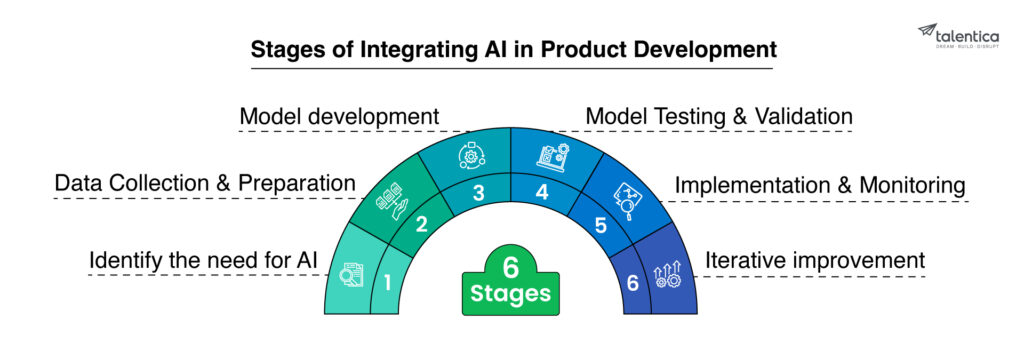
Integrating AI into a product isn’t about pushing model into production, it’s about building a system that adapts, learns, and improves over time.
Step 1: Identify the need for AI
This step focuses on understanding the challenges and opportunities within your product development process. Can AI address a specific problem or improve a particular aspect? Yes, it can. It depends on the level of collaboration among product owners, business analysts, and AI specialists.
These collaborations are perfect ground for grooming user stories and understanding how AI can impact the business in terms of productivity and ROI.
Step 2: Data Collection and Preparation
Once you have identified the need for AI, you will need the fuel for your AI model: data. This stage involves collecting relevant data, ensuring its quality, and preparing it in a format that the AI model can understand.
Startups and big tech companies face different problems at this stage. A lack of data is an issue for startups, whereas big techs struggle with refining their large volume of data. Data engineers and scientists play a key role here.
We begin with EDA to access quality, coverage, and bias. Our data engineers:
- Build ingestion pipelines
- Clean, enrich, and label datasets
- Ensure data observability and traceability from day one to ensure data isn’t just collected – it’s actionable.
Step 3: Model development
Once the data to train the model is ready, data scientists select the most suitable algorithm based on the problem.
Step 4: Model Testing and Validation
Testing the AI model and validating its performance is crucial. It should meet the criteria you have established.
Data scientists and AI engineers work together to ensure that the model works as expected.
Step 5: Implementation and Monitoring
If the test is successful, engineers, at this stage, implement the AI model in your product. But the work is not done! Continuous monitoring is essential to ensure model performance remains optimal and identify areas for improvement.
AI engineers and DevOps specialists take the lead here.
Step 6: Iterative improvement
The beauty of AI is its ability to learn and improve. By continually monitoring model performance in the real world, you can collect valuable feedback and new data. This allows you to refine and improve the model over time, ensuring that it delivers ongoing value to your end users.
Our teams use tools like MLflow and Kubeflow to set up:
- Continuous training pipelines
- Version- controlled deployments
- CI/CD for models
- Drift monitoring and rollback
What’s deployed today won’t stay relevant forever. MLOps ensures continuous learning.
Now that we’ve explored how AI can power each stage of the product development process, let’s dive into the specific technologies and tools that bring these capabilities to life.
But, before we get into those details, we want to share critical insight.
In our experience, the team that succeed with AI don’t rush in- they prepare. Assessing AI readiness upfront leads to solutions that scale, adapt, and deliver real business value over time. If you want to check your AI readiness, you can download our free AI readiness checklist.
We have developed this checklist based on our past experience in developing AI solutions for VC-funded startups, high-growth tech companies, and mature Big Tech products.
Get the AI Readiness Checklist
Key technologies and tools
The integration of AI into product development relies on a variety of key technologies and tools. These technologies include data analytics, natural language processing, machine learning, and large language models
Machine learning algorithms
Machine learning (ML) algorithms are the foundation of many innovative applications and power popular tools such as Google Search, ChatGPT, and Siri. These algorithms are of four types: supervised, semi-supervised, unsupervised and reinforcement learning. Each type excels at specific tasks, such as classifying data or predicting future outcomes.
Recent advances include joint embedding predictive architecture (JEPA), graph neural networks (GNN), neurosymbolic artificial intelligence, and quantum machine learning, all of which push the boundaries of what is possible.
Popular machine learning tools:
- Scikit-learn (Python) – Provides various classification, regression and clustering algorithms.
- TensorFlow (open source): Developed by Google Brain Team, used for machine learning applications.
- PyTorch (open source): Based on the Torch library, used for computer vision and natural language processing.
Generative AI models
Generative AI technologies have made significant progress in recent years. Tech giants and research labs are further helping technology advance by substantially investing in it substantially.
By 2027, it is estimated that more than half of generative AI models used by companies will be tailored to specific industries or business functions. Additionally, by 2026, a significant portion (75%) of companies are expected to leverage generative AI to create synthetic customer data for various purposes.
Generative AI tool:
- GAN (Generative Adversarial Networks) – A class of machine learning frameworks for generating new data.
Predictive analysis
Predictive analytics enables organizations to make informed decisions about the future by analyzing historical and current data. This technology provides valuable insights, enabling data-driven decision making, increased operational efficiency, and risk identification.
The predictive analytics market is projected to experience significant growth over the decade, with a market size of $20.5 billion by 2022 and a projected CAGR (compound annual growth rate) of 20.4%, reaching 30 billion dollars in 2028.
Predictive analysis tools:
- SAS Predictive Analytics – Provides a set of algorithms to create, validate, and deploy predictive models.
- IBM SPSS Modeler – Provides a platform for predictive modeling, data mining, and text analysis.
Natural Language Processing (NLP)
Natural Language Processing (NLP) plays a crucial role in the fast, accurate and efficient analysis of customer feedback. It enables forward-thinking businesses to gain real-time insights from large amounts of customer data. NLP feedback analysis involves automated analysis of text-based customer responses to extract actionable insights.
NLP encompasses several techniques, such as text preprocessing, tokenization, part-of-speech tagging, and syntactic analysis. Each technique plays a critical role in transforming unstructured customer feedback into structured, actionable insights that can be used to improve products and services.
Natural language processing tools:
- NLTK (Python) – A leading platform for creating Python programs to work with human language data.
- spaCy (Python) – A free open-source library for advanced natural language processing.
- BERT (Based Transformers) – A pre-training technique for natural language processing developed by Google.
We have explored the impressive toolbox of artificial intelligence technologies. These are the pillars that drive innovation in product development. But like any powerful tool, AI requires the right people to use it effectively. This is where creating an AI-powered product development team comes into play.
Building an AI-powered product development team
To successfully incorporate AI into product development, companies should build a team that understands AI and software development. They should also be aware of the necessary skills and knowledge required for AI work, ensuring that the team possesses all the prerequisites.
Identify the right AI talents and skills
The rapid growth of AI in 2023 and 2024 has created a talent gap, with demand exceeding the ability of companies and professionals to adapt. To close this gap, creating an AI-powered product development team requires identifying the right skills.
Look for specialists such as data scientists, machine learning engineers, computer vision experts, NLP specialists, AI product managers, and project leaders. These people will play a decisive role in the development and implementation of effective AI solutions.
Foster cross-functional collaboration
Technical expertise alone is not enough. Encouraging cross-functional collaboration is key. This can be achieved by integrating AI experts within product teams, establishing AI centers of excellence, and encouraging knowledge sharing and continuous learning.
By doing so, team members will gain a solid understanding of the role of AI in product development and will collaborate effectively to maximize benefits.
Cultivate an AI-powered culture
Lastly, it is essential to cultivate an AI-driven culture. This involves promoting data-driven decision making, encouraging experimentation and iteration, and embracing AI ethics and responsible development.
All these ensure the responsible use of AI and allows your organization to stay ahead in the AI competition.
Case Study: Successful AI Integration in Product Development
One of our clients (a mature U.S.-based SaaS platform) faced low email open rates, time-consuming content creation, and difficulty integrating the AI solution with an existing marketing approach.
We implemented a generative AI (GenAI) solution leveraging the combined power of ChatGPT and DALL-E. ChatGPT’s text-generating capabilities helped craft engaging email content, while DALL-E’s graphics created eye-catching visuals. To bridge the skills gap, our engineers seamlessly integrated with the client’s in-house team, ensuring a smooth workflow.
The results were impressive. Existing customers appreciated the new email format and generated strong interest from potential customers.
Benefits of AI in product development
AI is revolutionizing product development with benefits that allow companies to create better products faster. Here’s a closer look at the key benefits:
Greater efficiency and speed:
AI automates repetitive tasks throughout the development process, freeing up valuable time for developers and other team members. This includes tasks like code generation, data analysis, and even basic testing. AI tools can also intelligently suggest solutions and identify potential obstacles, further accelerating development.
The result? Products reach the market faster, giving companies a competitive advantage. Early-stage startups could really benefit from this as they work within a very tight timeline. Missing one deadline can be a deal-breaker for them.
During the pandemic, the healthcare sector leveraged AI to develop vaccines in the shortest time possible. While earlier vaccines took decades to develop, the new one was created within just a few months.
Improved innovation and creativity:
AI doesn’t just automate tasks, it also opens new avenues for creative exploration. By handling complex data analysis and repetitive tasks with high precision, AI frees up developers and designers to focus on the big picture and explore innovative concepts.
With Generative AI, things have become even better. GenAI models can create completely new designs, product variations, or even marketing materials, encouraging a more creative development process. Companies like OpenAI demonstrate this by using AI to generate human-quality text formats, translate languages, and even write code, pushing the boundaries of what is possible.
Reduced development costs:
AI helps companies optimize their development budgets. Automating tasks reduces the need for human intervention, which reduces labor costs. AI can also identify areas of cost savings, such as outsourcing specific tasks to specialized AI services.
For example, pre-built AI solutions, such as chatbots or recommendation engines, can be more cost-effective than custom development. This allows companies to invest more in core product features and functionality.
Improved quality and precision:
Product quality can go up by a notch with AI-powered tools. They can automate quality assurance processes and identify potential issues early in development. For example, AI-powered predictive maintenance can anticipate equipment failures, minimizing downtime and associated costs.
Chances of manual error can also be reduced by automating tasks such as code generation and analysis.
Challenges and considerations in AI integration
While AI offers enormous potential for product development, there are also key challenges to consider for successful integration:
Data privacy and security
Data is the lifeblood of AI systems and ensuring strong data protection is paramount. This involves implementing strong security measures such as encryption and access controls to protect data from unauthorized access.
Additionally, addressing ethical concerns and complying with data privacy regulations such as the GDPR are crucial for responsible AI development.
Integration and compatibility
Integrating AI seamlessly with existing systems can be a technical hurdle. Using APIs or developing custom integration solutions is necessary to ensure compatibility. Best practices for smooth integration involve extensive testing, implementing AI in phases, and fostering close collaboration among the AI team and other stakeholders.
Skills and talent gap
AI’s rapid growth has created a demand for specialized talent. The first step in addressing this gap is to recognize the need for specialized skills. Strategies for developing your AI workforce include providing ongoing education and training opportunities, partnering with AI experts, and promoting a culture of continuous learning within your organization.
Ethical and social implications
Considering the ethical implications of developing AI products is a must. This involves designing and using AI systems in a way that respects human rights and values. Here are some key considerations:
- Minimize bias in AI algorithms to ensure fairness and ethical decision-making.
- Promote transparency in AI decision-making processes to build trust with users.
- Consider the potential social implications of AI and develop responsible strategies to minimize negative impacts.
ROI Evaluation
While the potential of AI is often discussed in visionary terms, businesses must confront the hard question of return on investment (ROI). The initial allure of AI-driven innovation can obscure the real cost – development, integration, maintenance all requires significant resources.
To evaluate whether AI is a worthy investment, companies must establish clear metrics for success. How will it streamline operations, generate revenue, or enhance customer experiences? Only through diligent assessment can businesses balance the risk with the rewards.
Adoption of GenAI models
Generative AI (GenAI), with its ability to transform industries, has its own set of hurdles. These complex models require massive data sets and processing power, and for many companies, the infrastructure needed for such an endeavor is daunting. However, technological difficulty is only one aspect of the situation. Employee resistance is a deeper, more human barrier that frequently surfaces. Workers can be resistant to AI- induced obsolescence because they fear losing their job to automated systems. Addressing this requires open communication, not just about efficiencies AI can bring, but about the ways it can augment human effort. Offering training and fostering adaptability are key strategies to ease this transition.
Preparing for the future: Changing trends in AI and product development
Companies must be aware of trends to stay at par with AI’s growth and harness its potential to create innovative products. Here are some key areas to watch:
The rise of multi-agent artificial intelligent systems:
Multi-agent AI systems are emerging as a more effective approach to executing tasks. These systems, which include many agents that can interact and collaborate, have the potential to significantly improve efficiency and productivity in workplace applications. While still in their early stages, multi-agent architectures are gaining traction in fields such as customer service and software development, and large tech corporations and startups are creating frameworks and tools to aid in their implementation.
As multi-agent AI systems advance, we can anticipate an increase in the number of applications across all industries. The rise of AI agent markets will facilitate integration and collaboration with specialized agents, creating new opportunities for creativity and problem-solving.
To explore the challenges and best practices of adopting multi-agent systems—and how to fine-tune them for real-world impact. Check out our webinar Beyond LLMs- The Power and Pitfalls of Multi-Agent AI.
The explosive growth of generative artificial intelligence:
Generative artificial intelligence burst onto the scene in 2022 and quickly took root in the business world (2023). Like computers, its development followed a dramatically accelerating timetable. This year (2024), we have witnessed the explosive growth of high-performance, open-source basic models. Many of them have already started outperforming even the most powerful closed-source models on various benchmarks, despite having fewer parameters.
The rise of multimodal artificial intelligence:
Next-generation AI models, such as GPT-4 and Gemini, are multi-modal. This means they can process text, images and videos, opening the door to many new applications. With these capabilities, AI-powered tools can offer more comprehensive and adaptable solutions for a range of tasks, from generating dynamic content to boosting decision-making processes by providing deeper insights into data.
Video generative AI is rapidly gaining prominence in the marketing and entertainment sectors, with the potential to significantly transform both. This technology can reduce production costs and increase creative possibilities in the entertainment industry by allowing producers to produce video material at a pace and with flexibility never before possible. Multimodal AI models can now create films that include text, audio, and images with just a few text inputs, opening up a new world of storytelling possibilities.
For marketers, the ramifications are equally revolutionary. Generative AI not only offers convenience, but also enables hyper-personalized campaigns where video ads can be automatically tailored to specific viewers, delivering targeted content at scale. This dynamic potential brings a degree of engagement and participation that traditional advertising has struggled to match. AI’s ability to rapidly produce, modify, and personalize content will accelerate data-driven marketing trends, propelling marketing technology toward a future where customer experiences are specifically tailored in real-time.
Democratize artificial intelligence with custom chatbots:
Tech companies that have invested heavily in generative AI are now under pressure to monetize their products (2024). To solve this problem, giants like Google and OpenAI are developing user-friendly platforms. These platforms will allow people with no coding experience to customize powerful language models and create their own mini chatbots based on their specific needs.
Artificial Intelligence ethics and governance are increasingly important:
The recent dispute between OpenAI and The New York Times is a wake-up call for many industries. The newspaper has accused the AI company of using its articles to train a generative AI model, raising ethical concerns. In this rapidly evolving field, such practices are widespread, while regulators struggle to keep up and protect against data misuse. As the industry expands, the tension between innovation and ethical boundaries only deepens.
AI governance addresses the inherent flaws arising from the human element in AI creation and maintenance. It offers a systematic strategy to mitigate these risks, ensuring that machine learning algorithms are monitored, evaluated, and updated to avoid drawing incorrect or harmful conclusions.
AI governance include a range of policies and practices, such as:
Regulatory frameworks: Under the Digital Operational Resilience Act (DORA), AI applications in the financial industry must meet strict transparency, accountability, and security criteria. The General Data Protection Regulation (GDPR) aims to protect personal data and privacy in AI systems in the European Union.
International principles: The Organization for Economic Cooperation and Development (OECD) created the AI Principles, which have been endorsed by more than 40 nations and emphasize responsible stewardship, fairness, and accountability.
Corporate AI ethics boards: Many companies are forming corporate AI ethics boards, which include cross-functional teams from legal, technology, and policy backgrounds, to ensure that AI initiatives are consistent with ethical norms and societal values.
This multifaceted approach demonstrates the commitment of businesses and governments to address the complexities of AI while protecting the interests of users.
Conclusion
AI is crucial if you want to stay ahead of today’s competition. With artificial intelligence, creativity is boosted, workflows are smoother, and teams can come up with new ideas faster than ever before. By leveraging AI tools, companies can discover important insights that help them work smarter and create products that truly meet people’s needs.
However, it’s important to consider the ethical side of things, make sure your team knows how to use these technologies well, and keep an eye on new trends so you can make the most of artificial intelligence in product development. As we figure out the tricky parts and huge opportunities that artificial intelligence presents us, understanding the landscape and being ready to adapt will be critical to achieving great success in this ever-changing world of new product creation.

